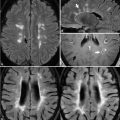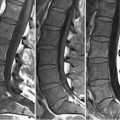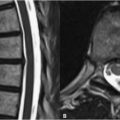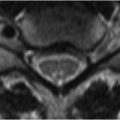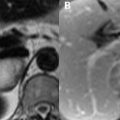56 Infections Of the inflammatory conditions affecting the head and neck, the most commonly observed on MRI is sinusitis. The respective sagittal and axial T1 and T2WI of Figs. 56.1A,B demonstrate a band of low to moderate and high SI, respectively, surrounding the periphery of the maxillary sinuses, bilaterally. This finding correlates with mucosal thickening, which alone does not indicate the presence of a sinus infection. In this case, however, the (B) bilateral dependent areas of high SI fluid with resulting air-fluid levels and associated mucosal thickening clinch the diagnosis of sinusitis. Sagittal images, as in Fig. 56.1A, can be used to confirm that the fluid is dependant, aiding in differentiation from a retention cyst. The variance in MRI SI characteristics of sinusoidal fluid is described in Chapter 20. Contrast administration helps to distinguish the enhancing, inflamed mucoperiosteum in acute sinusitis from the nonenhancing contents of a retention cyst, mucocele, or retained secretions. Mucoceles—most commonly occurring in the frontal sinuses—are benign, slow-growing, cystic, expansile masses that develop secondary to obstruction of the sinus ostium. The SI of mucoceles also vary directly with protein content such that especially proteinaceous lesions mimic the high SI appearance of hemorrhage (more frequently seen in coagulopathy or the setting of trauma) on T1WI. Desiccation over time results in a lower SI on both T1WI and T2WI. The SI evolution of sinusoidal blood products is similar to that described for intraparenchymal blood in Chapter 8
![]()
Stay updated, free articles. Join our Telegram channel

Full access? Get Clinical Tree


